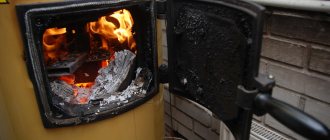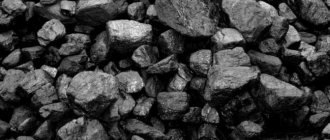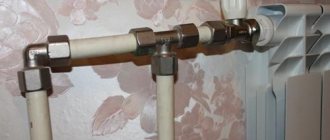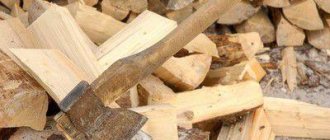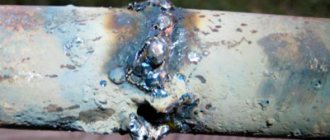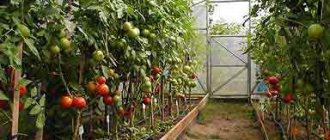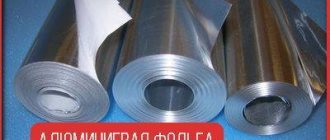Advantages and disadvantages of using it for heating
Positive properties of Euro firewood compared to conventional firewood:
- Scheme of pressing fuel briquettes from soaked paper pulp
High combustion temperature, almost 2 times higher. The heat transfer from wood is about 2500-2700 kcal/kg, and eurowood gives about 4500-4900 kcal/kg. - Low humidity. The smaller it is, the greater the heat transfer rate. For firewood, subject to proper storage, it is in the range of 15-20%, and for briquettes – 4-8%.
- High density - 0.95-1 g/cm3. For example, oak logs with a density of 0.81 g/cm3 burn much hotter than poplar logs with a density of 0.4 g/cm3.
The positive qualities of Eurowood include:
- They don't take up much space.
- They do not harm the environment because they are made from waste.
- They smolder much longer, and most importantly they burn evenly.
- Low soot count and less polluted smoke passage due to dry material.
The disadvantages include:
- Price. Initially, it seems that the cost of briquettes is much higher than firewood. But if you calculate the price per unit of heat that is obtained, the difference will not be so big.
- Instability to moisture. Briquettes require closed storage space with good ventilation, since wet material quickly crumbles.
- Marriage. Unfortunately, there are bad briquettes that are made from soft, rotten, very old, low-quality wood, as well as wood treated with chemicals. They significantly affect the quality of the material.
Alexey, Syktyvkar.
I use two types of boilers for heating:
electric boiler
and solid fuel. Previously, I only used firewood and turned on the electric boiler at night. I bought briquettes because they burn much longer, although they cost twice as much. For heating, two bookmarks are enough: in the morning and in the evening. Saved on electricity.
Valery, Lysva. Because of these briquettes, the kindling stove, which only lasted three years, burned out. It was comfortable to heat a bathhouse with them, but a little expensive.
Timur, Ekaterinburg. I don’t use briquettes all the time, but I started buying them often to make the heating process easier. One package is enough for two bookmarks. I have no idea what the density is, but an ordinary brick stove heats twice as long. The weight of such a brick is greater than that of a log of the same size. As soon as finances allow, I’ll probably switch to them completely.
Lilia, Mirny. From an economic point of view, it is more expedient to use briquettes. Firewood is romantic, but it does create a lot of debris around the fireplace.
Vladimir, Ufa. My house is about 100 m2. Heated by a boiler with an upper load option Karakan 15 kW. I used firewood and also coal, but coal bricks were much better. They burn just like coal, the ash is the same, and most importantly the room is tidy. I like it, I also want to try sawdust, but their price is high.
Andrey, Kaluga region. I use 80 mm peat briquettes of different lengths for a 20 kW Virbel Eco boiler. 25 kg of raw materials is enough for a day for a house of 75 square meters without insulation. The product is super, and the wood looks like a fairy tale. There is little ash compared to firewood. The only negative is the cost.
Are briquettes suitable for saunas or are they only used for heating a home?
Briquettes are made in special presses by burning and sintering sawdust with a gas-air mixture and further pressing under high pressure. The density of briquettes is three or four times higher than that of the best firewood. The briquette contains much more wood than the tree itself, no matter how strange it may sound.
Fuel briquettes are very versatile and are suitable for all types of stoves and boilers . They are even suitable for barbecues, fireplaces or large industrial boilers. Yes, manufacturers of steel sauna stoves made of steel, so-called heaters, do not recommend using fuel with a calorific value higher than 4900 kcal, and black coal has this value. But that’s the beauty of briquettes, that their calorific value is slightly lower, so even the most “delicate” stoves will digest them perfectly. But we are talking about the firebox of a bathhouse, and here the most important thing is the length of burning or smoldering. In other words, what is important to us is not the speed of heating the room (although briquettes are fine with this), but that the fuel generates heat for as long .
Due to low humidity and high density , fuel briquettes burn and then smolder for a very long time, at least two hours. According to this indicator, they at least twice as good as firewood This means that less European firewood will be required to heat the sauna and maintain heat in the firebox. The firebox can not be filled to its full depth, but only halfway. What else is important for a bath? What is important is the environmental friendliness of the fuel, with which everything is in order. Firstly, briquettes have an ultra-low ash content, it does not exceed 0.8-0.9%. Therefore, after burning a briquette, what remains in the firebox is not a huge pile of ash, but only a small pile of ash, which can be easily removed. Secondly, briquettes emit much less smoke, thereby keeping boilers, fireboxes and chimneys clean for much longer. Linden briquettes are especially good , which is exactly what our company produces. Of all types of wood, linden contains the least amount of resin , so fuel briquettes made from this tree do not pollute fuel systems and chimneys at all. Moreover, the use of linden fuel briquettes reduces the risk of corrosion and contamination of boiler nozzles.
With fuel briquettes, the black sauna opens up in a completely new way. There is minimal smoke and no suffocating tars either. What is there? And there are many phytoncides that heal the body and strengthen the immune system. This is especially noticeable when burning with linden fuel briquettes. The entire bathhouse is filled with the enchanting aromas of flowers and honey, the smells of meadows and fields - just an incredible atmosphere.
Well, a few words about storage. We all know very well what a hassle it is: delivering, unloading and preparing firewood for use. Often you have to work hard with an ax, after which wood chips, bark and other waste remain, spoiling the appearance of the area or bathhouse. With briquettes you are free of such problems, since they are supplied in packs of 10-12 bricks each. The packs are wrapped in a thick film that protects the briquettes from moisture and other aggressive influences. Since briquettes are shaped like bricks, they are very easy to stack, and you can even build entire walls from briquettes. They take up very little space in the bathhouse, look organic and even stylish. And we’re not even talking about ease of storage and use - it’s clear without words.
To summarize: fuel briquettes are an excellent alternative to firewood . An alternative that will save the family budget , save equipment, free up and improve more space. And most importantly, it will help you experience even more pleasure from bathing!
How to light a stove in a bathhouse
It all starts with the preparatory stage. He is the most labor intensive of all. Before starting work, it is advisable to find out how to heat a bathhouse if you have no experience in this matter. Firewood is prepared in advance. Dry logs are carefully placed in an accessible area, but not too close to the fuel door, so as not to provoke their spontaneous combustion.
It needs to be put in order - open the stove, clean the ashpit, remove all the ash and coals from the combustion chamber. This waste does not need to be thrown away - it makes good fertilizer.
If the stove structure is equipped with a water tank, you should make sure that water is present there. Then the draft in the chimney is checked. All doors and dampers open. Next, a match or splinter is lit and placed in the combustion chamber. If the flame flutters and moves upward, then the draft is fine.
In its absence, it is dangerous to start kindling. All the smoke will go into the room, and then you can suffer from carbon monoxide.
First, the seed is made. Tree bark or crumpled newspaper is placed on the grates in the stove opening. Wood chips and finely chopped logs are placed on top. Gaps must be left between them so as not to interfere with the free circulation of air. Do not use gasoline for ignition. This is fraught with the risk of a fire, and the released steam will lose its healing properties due to the presence of chemicals in it.
First of all, wood bark or paper is placed in the oven, and only wood chips are placed on top
The order of kindling is as follows:
- We ignite the seed from below. We close the firebox door so that no smoke comes into the dressing room and the flame flares up well.
- If a steady sound comes from there, there is combustion. If it is absent, the procedure is repeated again.
- You need to close the ashpit and open the valve.
- Firewood is added at intervals of 5-15 minutes. It all depends on the degree of dryness and heating of the stove.
- After the first batch has burned out, the firebox door is opened, the coals are leveled with a poker and logs are laid.
- Firewood must be placed so that the distance between it and the top of the firebox is at least 25 cm. Fuel is placed closer to the door, away from the chimney.
- During the combustion process, you need to monitor the water level in the boiler and add it as needed.
To heat the sauna faster, it is not advisable to water the heater during the heating process. It is better to wait until the bath procedures begin.
How much to heat?
Certain factors indicate the readiness of the bath:
- The temperature in the steam room is not lower than 60 C⁰;
- In the boiler, the water reaches its boiling point;
- The last portion of firewood burned down to red coals;
- The stones were well heated.
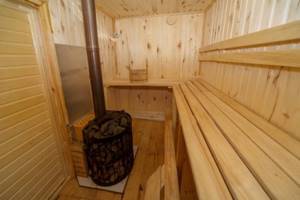
For the convenience of determining the temperature in the steam room, it is recommended to use special bath thermometers
In winter, this takes 5-6 hours, and in the warm season, 3-4 hours is enough. As soon as the required temperature is established in the bath, the firebox can be finished. If there are no blue flames above the coals, which is considered a sign of the presence of carbon monoxide, the vent, firebox and smoke damper are completely closed.
The sauna stove, made of red brick, heats up quickly and does not cool down for a long time. Due to this, a high temperature is maintained in the steam room even after the end of the fire, if the chimney was closed in time. The algorithm for kindling and adding firewood remains unchanged, the only difference is that firewood can be placed in a large volume in a brick stove.
A few large stacks of logs are enough to bring the room to operating temperature. Therefore, when lighting a brick stove, it is better to use wood with good heat transfer - oak, birch or ash. They are laid so that there are small gaps for air between them. If you do this closely, the flame may go out. After 1-2 hours you can go to the steam room.
Sawdust fuel briquettes
Would you like to buy fuel briquettes wholesale from the manufacturer with delivery to any city in Russia? offers environmentally friendly European firewood from linden sawdust of its own making.
| Dimensions: | 155 x 65 x 105 mm. |
| Humidity: | 8-10%. |
| Ash content: | less than 1%. |
| Calorific value: | 4200 Kcal/kg. |
Packaging options for fuel briquettes:
- 9 fuel briquettes - 8 kg.
- 12 fuel briquettes - 10 kg.
Packs of briquettes are placed on a Euro pallet 1200 x 800 mm. The total weight of the pallet is 1 ton.
Selecting fuel for kindling
The degree of heating, the microclimate in the steam room and the consumption of firewood depend on the correct choice. Not all wood is suitable for this purpose. This applies to the following categories:
- Old boards or logs. They give off heavy steam and smell bad.
- Rotten raw materials - minimum heat, a lot of waste.
- Painted logs. This is dangerous for the body.
- Knotty firewood is characterized by uneven burning. The wood burns before the knots, and they have to be removed from the stove or chips added.
- Young trees and their branches. They have low heat transfer.
Trees growing near the house are more often used. In steppe areas these are usually branches of bushes. Spruce, pine and birch are taken for kindling in areas where there is forest. Such firewood emits a pleasant aroma of the forest.
The best option for kindling is dry wood with a minimum of knots. Its preparation is carried out in the middle of winter. Frozen logs are easier to split and contain little moisture. Hardwoods are used more often. A hot sauna is obtained using logs made from birch, ash, alder or when using wood from fruit varieties. Coniferous firewood is used less often - the resin contributes to the abundant formation of soot.
Each breed has its own set of characteristics:
- Oak is a prestigious and expensive fuel. Leader in heat transfer if the wood is chosen correctly. Oak logs should be from middle-aged trees. Then the steam will be tart and healing, and the warmth will last for a long time.
- Alder burns quickly, contains almost no resins, so there is no smoke from it. It is distinguished by ardent heat. Its healing aroma invigorates and helps cope with colds. Alder wood dries quickly and can be stored for up to 3 years, while retaining its scent. Destroys soot deposits on the heater.
- Birch – gives a disinfecting heat with light and fragrant steam, beneficial for the respiratory tract. They burn evenly and set quickly. They do not spark, they form a high flame. When birch logs burn, tar and resin are released, which settle on the chimney. This protects the bathhouse from fire, but you have to clean the chimney more often. In terms of heat output they are in second place after oak.
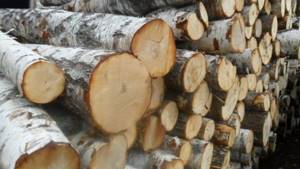
Birch firewood, known for its high heat output, produces an even flame without sparks - Linden burns slowly, but its heat is persistent. Linden steam has a beneficial effect on the lungs if you use firewood that is no more than 2 years old.
- Aspen - gives a little heat and does not light well. Its wood burns quickly, but the flame is long and without soot. When burning, logs help loosen dense soot. There will be more heat if you use other types of firewood at the beginning of the kindling.
- Pine – gives a lot of heat. When kindling, coals “shoot” and a crackling sound is observed. If you heat a sauna with pine logs, the risk of fire increases. The aroma of pine needles, which is released when burning, is beneficial for the respiratory system.
- Poplar sparkles, produces a moderate amount of heat, but burns quickly. It is also not recommended for use in a bath.
- Spruce burns evenly, retains heat for a long time and leaves good coals. It contains a lot of resin, so it produces a characteristic crackling sound and sparks.
- Willow burns well and does not smoke. It burns out quickly, so a large supply of firewood is required.
- Larch - it has little resin, it produces little heat. Produces more carbon monoxide than other rocks. After kindling with larch, it is necessary to ventilate the dressing room and close the damper in time.
Fruit trees are not always available, and it is not profitable to burn poplar trees. It is best to use hardwood logs. Ash, oak, and birch wood are ideal. But the first two varieties are classified as valuable, and they are more often used for furniture production, which is why they are more expensive. Birch is more accessible and practical. It produces almost no soot and produces a lot of heat. The chimney will always be clean if you add aspen firewood at the end of the firebox.

Aspen flares up very slowly and does not burn for long, but it cleans the chimney perfectly, so it is recommended to combine it with other types of logs
Wood pellets are inconvenient to use in a conventional oven. Grate bars with smaller slots or special baskets should be provided for them. Then, when using pellets, the material itself burns first, and then the gases released. Fuel briquettes are much more convenient.
To heat a bathhouse, they will need five times less volume than conventional firewood. But they cost several times more. The heat from briquettes is almost the same, and they burn 25% longer than pure wood. There is a third less ash left after compressed fuel.
The raw material for the production of briquettes and pellets is waste from the woodworking industry. Most often this is dust left over from plywood production. In the process of its creation, phenol and urea are used. When burned, they release substances harmful to health. The smoke from them is corrosive, and there is a lot of soot. If you don’t have firewood on hand or have nowhere to store it, then compressed fuel can be used, but it is not recommended for regular use.

Pellets or fuel granules are made from wood waste and used in pellet stoves
Such materials are absolutely not suitable for sauna stoves. Sleepers most often contain traces of fuel, and due to prolonged contact with the environment, the wood deteriorates and becomes saturated with moisture. The flame from such firewood will be uneven, and they emit little heat and burn out quickly.
Rotten sleepers and painted boards emit an unpleasant odor when burning, as well as toxic substances. Breathing such vapor is harmful to health.
Blitz tips
- It is best to use wood briquettes made from sawdust, since their quality is as close as possible to firewood. They burn well, have good heat dissipation and a small amount of ash. Euro-firewood made from seed husks is also very good, but they quickly pollute the chimney and heating appliances with soot.
- The heat transfer from hard and coniferous trees is absolutely the same, but pine needles contain resin, which will cause the chimney to become very dirty.
- When buying briquettes, pay attention to the test reports, which indicate the main characteristics of the sample you have chosen.
- Focus on the density of the material; the higher it is, the longer and more evenly the Eurowood will burn. The highest indicator is for Pini-kay, the average is for Nestro, and the lowest is for RUF.
- Before buying a large batch, take several samples in different places and see how they hold their shape and burn. This is the only way to determine their quality.
An alternative solid fuel - briquettes - is an effective and, most importantly, affordable way to heat a house or other outbuildings.

